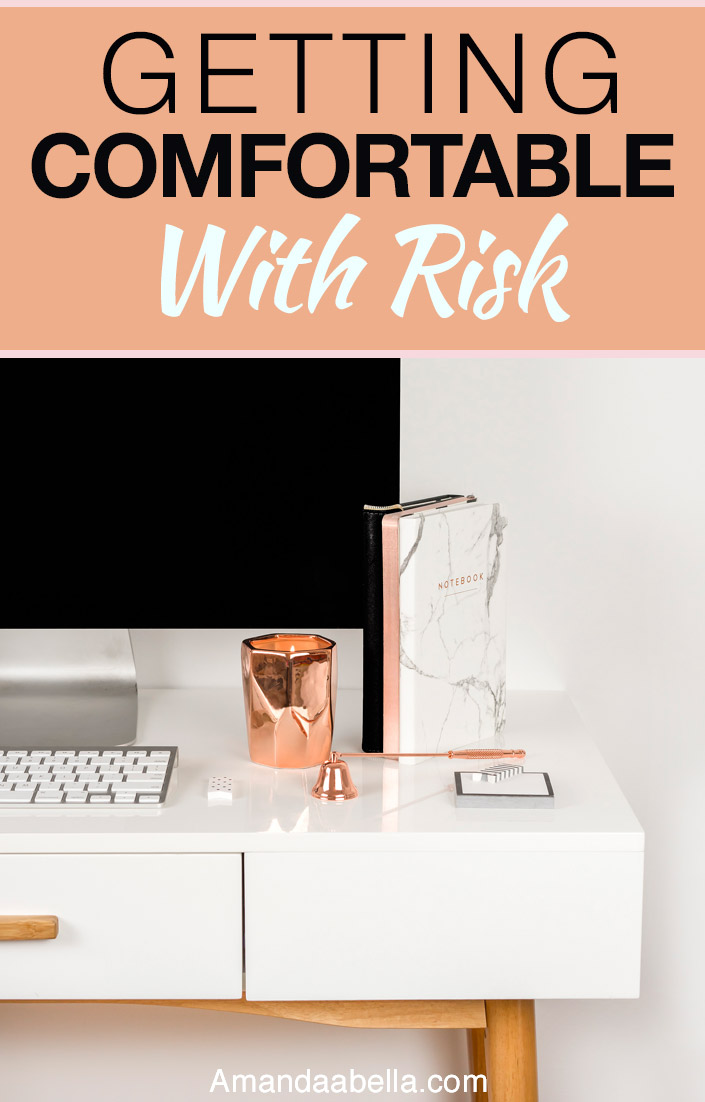One of my biggest pet peeves in the business and money world is when I’m talking to someone and they’re saying how much money they want to make, and how much success they want to have, so you tell them, “Okay, well, I can help you with that. It’s gonna cost this much,” and they’re like, “Oh no, I can’t do that because I don’t use credit cards, and you know, I need to make sure I have all the cash up front,”.
I get it because I used to think that way too. And this is why this is gonna be very controversial because I come from a personal finance background. And a lot of the content in the personal finance space is anti-credit card. But we are going to talk about getting comfortable with risk, and that will involve credit cards sometimes.
I’m not anti-credit card
I’ve never been anti-credit card. I have been afraid of credit cards because I didn’t know how to use them. The more I built a business, the more I realized that debt can be used as a tool. It just buys you some time before you have to pay for something.
If you’re bootstrapping a business, debt or pulling from savings is your only option. Especially if you’re in the beginning stages and your business is not making a lot of money. It’s different to the ones who are making money because they already understand risk and they already understand ROI. They were getting comfortable with risk and it paid off, so they understand what it takes.
Some people are scared to start getting comfortable with risk.
Sometimes people get themselves into trouble with debt and they don’t trust themselves to handle it. Other times, they haven’t learned how to trust themselves yet to handle it. Sometimes, it’s a matter of really not understanding what a calculated risk is. And other times, it’s just like a fear of failure.
When you’re building something and you don’t have investors and you don’t have a business loan, you’ve only got two options. Your options are to pull from your savings or slap it on a credit card and figure out how to pay for it the next 30 days. Now, am I advocating getting into credit card debt? Absolutely not. I have never carried a balance from one month to the next. What I am advocating is, and I’ve done it, is if you have the opportunity to invest in yourself, that you can use credit as a tool to begin the investment and then, you know, you buy some time to pay it off.
How I’ve done it.
I’ve been in multiple positions where I’ve paid to work with a mentor or go to a specific event. Did I have money “set aside” in a separate account in cash for this particular thing? No. Because sometimes opportunities just show up and you don’t have time to do that. And that’s kind of what happened to me with Tony Robbins. I didn’t know how I was gonna pay for it. I just went to an event and found out and knew a good deal when I heard one, and I slapped it on a credit card and said, “I don’t know how I’m gonna make a return on this investment but I know I’m gonna make a return somehow. And here are some ways that I can hustle a little harder”.
That is a very different mentality than what I see a lot of people having, which is, “No, I can’t do it because I need to have the cash set aside first,” or, “I need to know that I’m gonna be successful,” or, “I need to know that I’m going to get X, Y, and Z out of it.” Two very different mentalities.
You pick your poison in terms of which one do you want. Do you want to start getting comfortable with risks and hustle and find a way to make shit happen? Or do you want to be in a position where you’re too scared to take risks and make shit happen?
And again, using credit cards as a tool and as leverage, that’s just one example. But this really applies to any risk you could be taking in your life. It wasn’t until I got comfortable with risk that I really started making good money and that I was able to build a six-figure business. Here’s how I started overcoming that.
I realized everything was a risk.
The first time I really understood this was at my last job. I was a recruiter, I worked for a company that was the middleman between candidates and placing them within open positions in Fortune 500 companies. All your life you’re told real jobs are secure. After two years, I was trying to make the decision between should I stay or should I go. When I was trying to make that decision, after interviewing like 10 people, most of which had been laid off, it dawned on me. I thought, “Wait a minute, real jobs are not secure at all.”
You could lose your job next week. That’s risky too. I realized if I stay where I am, I’m still taking a risk. And not only am I taking a risk, but I’m also basically giving up on something that could be so much better if I take the risk.
But you want to know what happened as a result of that? Six months later, I was able to quit my job based on what it is that she taught me. So, that’s the first tip is to realize that everything is a risk, so decide what kind of a risk you want to take. Do you want to take the risk of staying where you are or do you want to take the risk of potentially failing but also succeeding?
Start small.
I’m the type of person that if I realize a problem, I like to rip the Band-Aid off and get it over with. I realize not everybody’s like that. So, one of the things that I recommend is to start small. For example, paying for a course that’s like $200 or $300 that will teach you how to do X, Y, and Z. Or even start putting yourself out there. Do it incrementally over time. The more comfortable you get taking risks, just the smaller ones, suddenly they start getting bigger.
Learn to take calculated risks.
Something that irritates the crap out of me is when people are told, “Okay, you have to spend money to make money.” It’s true. Let me tell you as a business owner, it’s very true. You have to invest in yourself and you have to invest in your business. It does cost money to make money. However, there’s a caveat to this. You have to be very calculated with where you put your money. This doesn’t mean go crazy and spend money on everything. Getting comfortable with risk means you need to be very calculated.
You have to be willing to take ownership.
You have to be willing to take ownership just in case something doesn’t work out. If you decide not to move because you’re too scared and you value security, then you need to take ownership of the fact that you’re gonna stay where you are. You need to accept it. And if you do decide to take a risk to go after what you want and it just doesn’t work out, then you have to take ownership of the fact that, hey, you know what? I took a risk and it didn’t work out. It is what it is.
Judging based on my experience, there’s only one time I’ve taken a big financial risk in my business where it didn’t really work out. Just one time, that’s it. Every other time, it worked out fine. Whether it was a massive rebrand, hiring people, courses that I took, wanting to work with specific mentors, going to specific events and not necessarily knowing how I was gonna pay for it, every other time, it’s worked out just fine. But it’s been because I’ve taken calculated risks, I’ve thought about ROI, I put myself in positions where I had to hustle.
At the end of the day, when you’re dealing with your finances and your money, it’s up to you what you decide to do. This is merely my opinion based on my experience running my business, helping other people run theirs, and also the reality of the situation that most small business owners are in right now where you’re not getting traditional loans, and it’s not like you have investors throwing money at you. It’s okay to get comfortable with risk, but only if you do it right.

